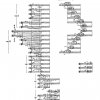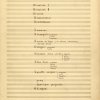Episodes
Episodes for strings and three percussion groups (1958–59)
National Philharmonic Orchestra, cond. Jan Krenz, „Warsaw Autumn” 1997
{slider=Episodes for strings and three percussion groups. I Proiezioni /fragment/}
National Philharmonic Orchestra, cond. Jan Krenz, „Warsaw Autumn” 1997
{/slider}
{slider=Episodes for strings and three percussion groups. II Movimenti. III Migrazioni /fragment/ }
National Philharmonic Orchestra, cond. Jan Krenz, „Warsaw Autumn” 1997
{/slider}
{slider=Episodes for strings and three percussion groups. III Migrazioni /fragment/}
National Philharmonic Orchestra, cond. Jan Krenz, „Warsaw Autumn” 1997
{/slider}
{slider=Episodes for strings and three percussion groups. IV Incontri /fragment/}
National Philharmonic Orchestra, cond. Jan Krenz, „Warsaw Autumn” 1997
This is how the composer himself wrote about Episodes in the programme book of the 4th “Warsaw Autumn” (1960):
The piece consists of four episodes following each other without any break. The names of the episodes point to spatial problems I was trying to solve. Episode one – “proiezioni” (projections) – emerged from diverse forms of arranging the various structures, each of which is a separate sound unit. Episode two, “movimenti” (movements), is a kind of “spatial counterpoint” of three voices – percussion groups. The objective of the third episode – “migrazioni” (migrations) – is to use the placement of bowed string instruments to obtain various forms of sound movement in space. Episode four – “incontri” (encounters) – brings together all formal elements from the previous episodes and provides a synthesis of them. Hence the key role of this episode in the entire work.
{slider=Sources:}
- Tadeusz A. Zieliński, O twórczości Kazimierza Serockiego [On Kazimierz Serocki’s Oeuvre], Kraków 1985.
{/slider}
Sheet music available from: PWM








